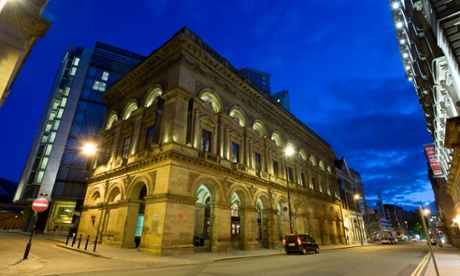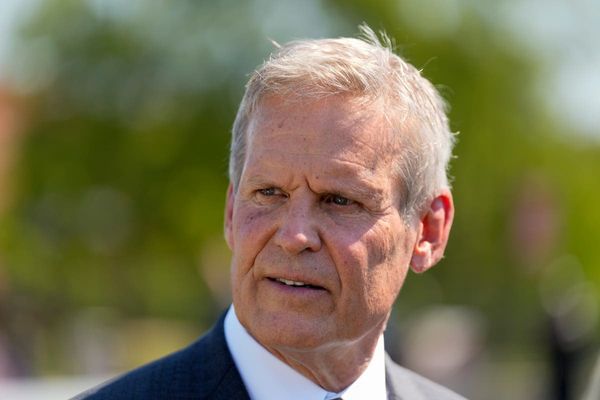
Tourists may be forgiven in thinking Manchester is all about rain, baggy trousers and Coronation Street. Perhaps less known is its rich history of political radicalism.
You may have read about the homeless campers in tents, or the 50,000 people who marched against the NHS cuts in 2013; maybe also of the rally against council rate-capping during the 1980s. But Mancunian revolts are neither recent nor isolated incidents. Without Manchester, the world today would have been a very different place.
St. Peter’s Square — currently a mess thanks to the Metrolink second crossing tramworks — is key site in Manchester’s history. Although this square was once a patch of open ground, and near land known as St Peter’s Field, it was being rapidly urbanised during the nineteenth century. Many thinkers, reformers and agitators would gather around here to advocate change long before the notorious Peterloo Massacre of 1819.
The massacre, its name a play on Waterloo, was commemorated on Sunday, with actors Maxine Peake and Christopher Eccleston leading the tributes. For those unaware of its significance, it all began when a number of respected orators were calling for parliamentary reform amid a crowd of tens of thousands during one sunny Monday morning. But what was initially just another peaceful meeting in the fields ended in tragedy, as a sword-wielding cavalry charged into the defenceless crowd, leaving 15 dead and more than 600 injured.
“It was the largest crowd ever gathered at that point in British history,” says radical historian Michael Herbert. “The sight of the British army attacking its own people was unusual, almost unprecedented. It was a really shocking event with reverberations that went on throughout the nineteenth century.”
The outcry sparked was also one of the key contributing factors to the establishment of the Manchester Guardian.
To commemorate Peterloo, I’ve designed a walking tour around key sites in Manchester’s radical history:
A. Peter Street
To stand at the heart of the massacre, you have to go to Peter Street. You’ll walk past the Midland Hotel, which is to the west of the square, and which was formerly a group of houses and gardens, some owned by magistrates.
B. The Free Trade Hall
Now the Radisson Hotel, this luxurious palazzo-style building has a plaque dedicated to Peterloo and was once occupied by an earlier hall used by the Anti-Corn Law League. Just as handloom weavers had marched in favour of working class emancipation, the League had used the former Free Trade Hall to call for the strengthening of the middle classes. It was led by two manufacturers, a gregarious Liberal named Richard Cobden and his colleague John Bright. Cobden, who had owned a sizeable portion of St Peter’s Field, earmarked the area for a pavilion where entrepreneurs would gather for political purposes. Soon Cobden and Bright’s passion for free trade helped the League become the biggest lobbying group of the era.
Far from just a front for business, the League was an alliance between the middle and working classes – and its advocacy for free trade won even more support after Peterloo. The stalwarts targeted the repressive Corn Laws – a tax on imported grain – for raising bread prices, and for swelling the landed gentry’s coffers. Following the successful repealing of the tax in 1846, the group then disbanded, food prices dropped and profits soared.
C. Elliot House
If you leave Peter Street, more of Manchester’s history can be found on Deansgate, a road with a red building called Elliot House. Its name is new – derived from John Kenneth Elliot, the city’s chief education officer from 1955-68 – but the House itself was built in 1888 for the old Manchester School Board. A woman named Lydia Becker was elected as the Board’s first female member in 1870, and she served there until her death in 1890.
“Lydia Becker was the one who began the suffrage movement through constitutional means in 1860s, choosing to argue by the book, rather than by burning art galleries down,” explains local tour guide Jonathan Schofield, referring to Manchester’s more notorious feminist, Emmeline Pankhurst. Although Pankhurst was an important figure for the women’s suffrage movement – and her home has now been refashioned The Pankhurst Centre in Nelson Street – Schofield describes Lydia Becker as a notable predecessor.
When she was not campaigning for women’s votes, Lydia Becker wanted more girls studying science and more boys learning housekeeping skills. As an astronomer, a biologist and a botanist, she had a formidable intellect, and the perfect choice for improving local schools. She once said: “It was a great mistake to suppose that domestic duties were limited to girls and women…every boy in Manchester should be taught to darn his own socks and cook his own chops.”
D. Abraham Lincoln statue
A detour from Deansgate into Queen Street leads to a square dominated by a bronze Abraham Lincoln statue. This was erected here as a tribute to Manchester’s citizens for their stance against slavery during the American Civil War. This was in spite of Lincoln’s embargo on slave-picked cotton, which starved England’s factories from much-needed imports. Although the blockade left many mills under-supplied and people out of work, a divided Manchester voted to support the Union cause in a mass meeting held in the Free Trade Hall in 1862.
One year later, the American president replied to Manchester’s working people with a letter, whose words are inscribed on the statue: “I cannot but regard your decisive utterances on the question as an instance of sublime Christian heroism which has not been surpassed in any age or in any country.”
It’s certainly one of the most admirable moments in the city’s history. It is hard to identify the source of Mancunians’ brazen independence, which may have ignited conflict between entrepreneurs and their employees, but it was also what united them to support the abolition of slavery. Although the laissez-faire influence is significant – and Manchester certainly had more pronounced class tensions than other Victorian cities – Herbert notes that during the English Civil War, “Manchester took the side of Parliament, as opposed to Lancashire who took the side of the King. So it’s always been a bit different.”
E. Chethams and F. Manchester Cathedral
Manchester Cathedral, which was ransacked during the Civil War, is the most visited tourist attraction of the Millennium Quarter, just north of Deansgate. But a hidden gem is located just behind the church. The neighbouring Chetham’s College, a medieval manor house-turned-school, has the oldest public library in Britain. It has been in continuous use since 1656, and was favoured by one Dr Karl Marx.
Karl Marx and Friedrich Engels, who co-wrote the Communist Manifesto, spent many years in Manchester, and the city’s changing districts stirred their writings. They devised their critiques of capitalism together at a table by the bay windows, which remains untouched by modernity. You can’t help but wonder if the two communists sought respite here, as the library was cloistered in some of the worst slums in Victorian Manchester. Angel Meadow Park, a beautiful area just minutes away, was then known as Old Town, but Engels preferred to call it “hell upon earth”.







